Waves and Rockets
Santa Barbara Surfer Heads to Middle East in Search of Swell and Truth
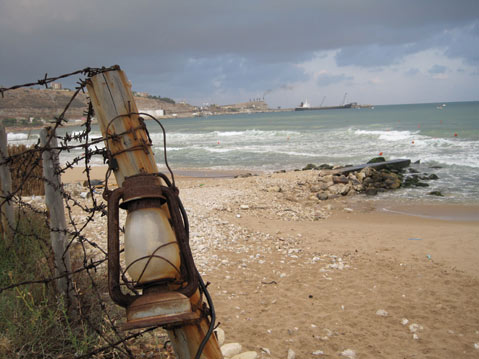
Santa Barbara surfer/journalist Jesse Aizenstat recently traveled to the Middle East to find the Mediterranean Sea’s best waves while investigating the world’s most conflicted region. The result is the fascinating three-part e-book Surfing the Middle East, the first installment of which was just published for the iPad this week. The following are edited excerpts from the book:
Preface
It’s hard to explain why I decided to surf the Middle East.
Perhaps it was the fact that when I graduated from college in May 2009, the U.S. job market was in the worst shape since the Great Depression. I had just received a letter informing me that I had narrowly flunked the grammar section of my Foreign Service Exam, and that in one year’s time I was welcome to try again. My backup plan was to hop aboard a foreign nongovernmental organization. This ambition was quickly ended by unforeseen budget cuts.
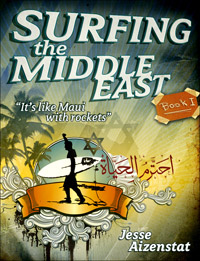
Most fellow graduates I knew were either swallowing their pride and moving back in with their parents or settling for some job that was unrelated to their increasingly irrelevant Bachelor of Arts degrees. As for the lucky few who found something career-oriented out of college, most were underemployed, transplanted to some funky town no one had ever heard of, and, most grave, taken from the magical shores of the Pacific Ocean. None of this had much allure for me. Perhaps that’s what opened me to the realm of possibility.
The idea of actually trying to surf from Israel to Lebanon came one day when I was meandering along the Pacific Coast Highway, looking for surf. I didn’t have post-college employment lined up, and the two things that bring me the most joy in life — surfing and trying to understand the Middle East — didn’t exactly fit into a conventional job search. So it was out of the depths of the unconscious imagination that a story came of two stunning Levantine countries, sharing the same surf report along the Eastern Mediterranean, yet with absolutely no contact with one another. Indeed, it was a wave worth riding.
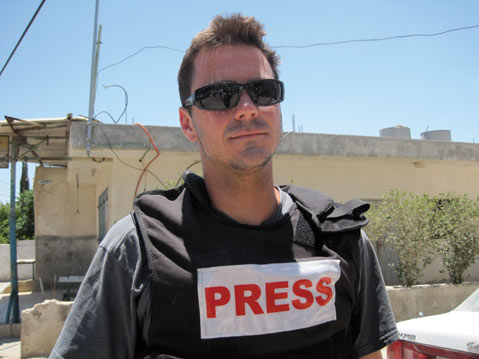
As a student of the Middle East, I knew that trying to cross the Israeli-Lebanese border would be impossible. It is closed — with all sides armed, fortified, and constantly striking matches to test the combustibility. Opening the border for a lone California surfer to “explore new turf” and “tell a journalistic story” was out of the question. I would have to “go around.” Meaning that after I found surf in northern Israel, I would have to go back down through Jerusalem, into and across the West Bank, get to the inland airport in Jordan, fly over Syria, and land at an airport in Beirut that wasn’t exactly welcoming to the Hebrew visa in my passport. In the end, I probably drove a greater distance along the open California highway just dreaming up this adventure — yet, it is that irony that makes Surfing the Middle East just as much a journalistic dream as a surf adventure through the forbidden borders of the Eastern Mediterranean.
Through this seemingly harmless vehicle of surfing, this tale is about my experience traveling through some of the most divisive, hated, and ready-to-explode places in the world. By the time this book is published, the places I describe may in fact be under siege by Israeli air strikes or sporadically rained upon by Hezbollah rockets. The very land where humanity walked out of the desert and organized itself into civilization is still arguably the most-sought-after real estate on the globe. All eyes look in.
And as hard as traveling through this part of the world was, it was possible only because of the hospitality shown toward this young American. Some of the people I encountered on my travels through the Middle East were less than helpful, yet the overwhelming amount were, and it is to these people I owe my gratitude.
This Wave
“Go! Go!” yelled a few of the Haifa surfers from afar. It was time — a wave was coming.
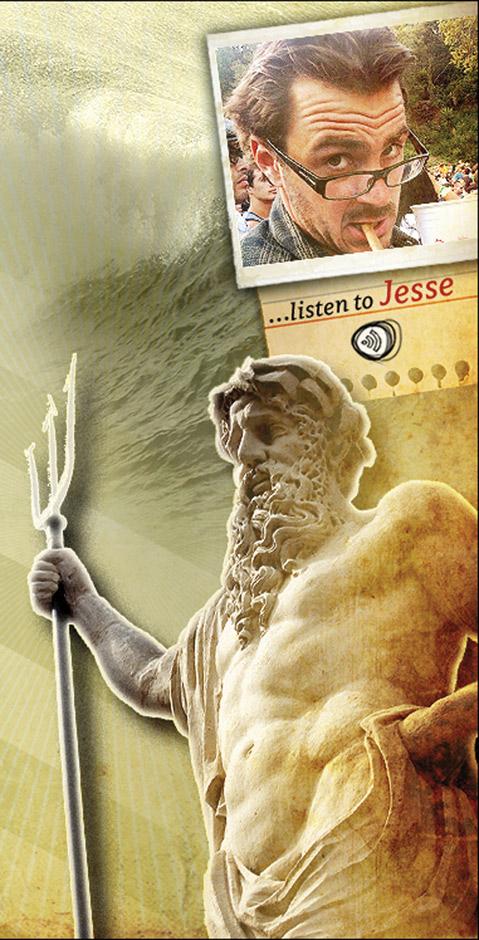
Some old pestering wave god from Crete had blown in a mounding swell that was starting to rise from the depths of the sea. The water had that green, clear, glassy look, and you could see right down through its crystals into its mysterious, volcanic bottom. But this maritime hump was starting to build, goddammit, taking shape and filling with size and power. The water below was sucking out to sea — a jolt of juice for the building crest, bringing the savage crags of reef that much closer.
And that’s when the strange music starts. All of nature’s factors have aligned to allow you, the surfer, to lunge yourself into the meat of this thrilling colossus. It is a serene moment. The loss of rational thought caves in, as your animal brain, your adrenaline, takes over, synched to the flow of nature’s music. You are one.
So you paddle like hell down the mounting steepness of the developing face, knowing damn well the toil that awaits your body if you fall. All other things are in the background now, swallowed by this mystically familiar tempo, the epic of the sea. Your later today, your tomorrow, your job, your spouse, even that motherfucker you bank with have all been made irrelevant by this looming moment: The Wave.
It’s this flash when the great power of the sea grabs you, pulling the nose of your board into the full steepness of the crest, forcing you into a line you’re not quite sure is even make-able. But so much for that. You’ve already committed. So you grab the rails and arch your back as your lead foot slides up the waxed deck, planting that twisted sucker down with Solomon-like authority. The rest of your body follows as you come upright, rushing down the line, parallel to the shore, setting up for the Perfect Ride.

The Perfect Ride. An orgasm. Known only to those who have actually had one. How could it be explained to a child? It must be felt. Earned. Which is fortunate, because this wave does start to kick, gaining speed as the water is hastily draining from your only exits. It’s chasing you, like a band of rabid beasts, lurching and closing in fast. No margin for error.
Jesus God, you think. Can I make it?
With your knees breezed and your front foot lightly pumping, you hustle through this manic chase of whitewater destruction. Reality hits: The lip of this wave has started to break, almost over your head and into the curl. Nature’s music is so humbling; a mere moment in this wave-covering “shack” seems like a blissful eternity. A moment that took years of preparation. For this sober moment. And it is now. Utterly sublime. The shack of… the source of… the Holy Grail. The peace humanity has overlooked on this Middle Eastern shore for thousands of years.
And now it is all felt together: the Surfer; the Wave; the Perfect Ride; the Holy Grail; the Peace.
But only for a moment.
This ride is over.
Your adrenaline wanes as you slow into the calm periphery of the break. And you come to terms that you have come along for this wave — as if you were literally riding it … but were you?
The Knoll of the Rocket
Like a methedrine-crazed bat, Lee darted out of his small Japanese four-cylinder and ran off the pothole-ridden road. “C’mon!” he yelled. Lee had offered to give me a ride back to the Port Inn. Now he’d stopped somewhere else? Something was up. And it seemed important. But I couldn’t get it. Not yet.
Darkness had just set in and things were disorienting. I knew we were somewhere between Carmel Beach and the Port Inn. But where? South Haifa? The night air grew thick with looming and undefined angst. A cloud of murky strangeness.
I looked around for something recognizable. At least something other than Lee, who was damn near running away at this point … but nothing. Only the dull glow of the rock formations across the path, which gave off an eerie, time-capsule ambiance — like we had driven into some 100-year-old David Roberts watercolor of Ottoman Palestine. What was going on here? It made no sense at all.
“Jess, c’mon,” Lee called, with a sense of urgency. “I want to show you something.”
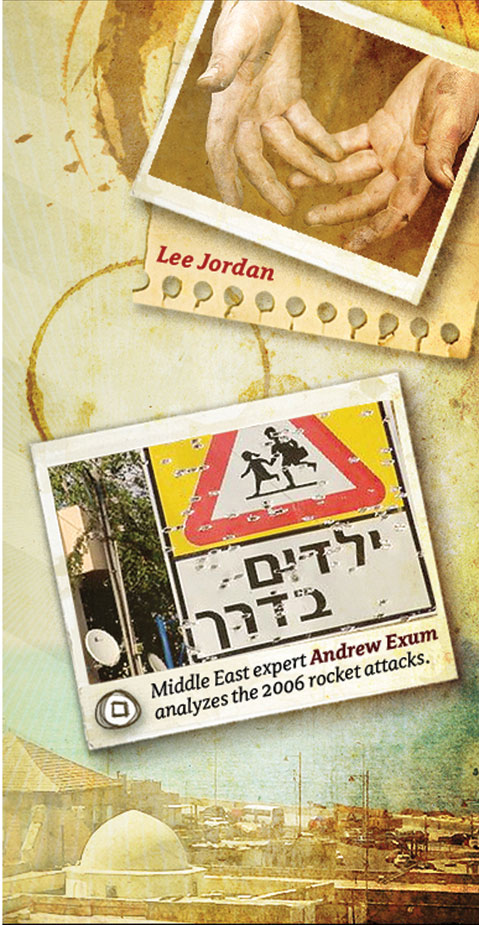
So I started after him, away from his car, off the poorly paved alley and up the shadowy knoll. The air felt warmer here than at the beach — thick, rich, exactly how the tyranny of any college English department would want “Mediterranean” to work as an adjective. The grass was squishy, growing darker as I trampled over its long shadows, away from the light. The faster I moved, the more vulnerable I felt to sudden things I did not know yet existed — an unexploded landmine from an early Arab-Israeli war? My knee-high shorts left my legs hitting random weeds, open to all small things in all small holes. It would be easy for a lurching creature — like a snake — to… Christ, man, what is this Goddamn Fucking Surprise?
I caught up to the madman as he stopped, panting, at the top of the dark and grassy knoll. Lee turned to me — waiting, watching, ready. “Look down,” he ordered. I did so briskly and, to my surprise, saw nothing. “No!” he said sharply. “Look here.” He pointed his hand, forcefully.

It was commanding, like his voice had been cast from an iron den of institutional authority — the army? I wasn’t used to hearing my newly palled surf mate speak in such a way. This was serious. I hadn’t seen this side of him.
With both hands extended, callused from their daily duties of surfboard shaping, Lee pointed to what appeared to be a gnarled pipe sticking a half-yard off the ground. I jumped. I hadn’t seen this junked thing as I ascended the knoll. Had we left the main road and ran up this knoll for a stray pipe?
And zap — like a punch to the face — the reality hit like a boxer without gloves: These guys were messing with me! Setting up some brutal Israeli joke on me, The American! I gasped. I trembled. I waited for the surf jackals to pounce.

There is no honest way to describe the panic I felt: I was alone — a few weeks in the Middle East and I hadn’t quite adapted to the subtleties of this climate. Most of the time I felt great, on it, in control; but there were moments when I felt so frightened … truly in a far-away place. My senses were not yet tuned for the world’s most combustible region; I didn’t know how to assume things. Had I wandered too far?
Lee saw that his Goddamn Fucking Surprise had left my mind turning with fear. Yet he seemed confused by this and started in on what he’d hustled me up the knoll to say. In sober voice, he spoke, “This metal pipe used to be attached to a sign. In 2006, a rocket from Lebanon hit this sign.” Lee’s gruff hands were playing out the shadow drama with the stubby pipe right behind him. “Right where you are standing was a hole.” Then his deep-set eyes twisted toward mine: “Hezbollah.” We both fell into silence.
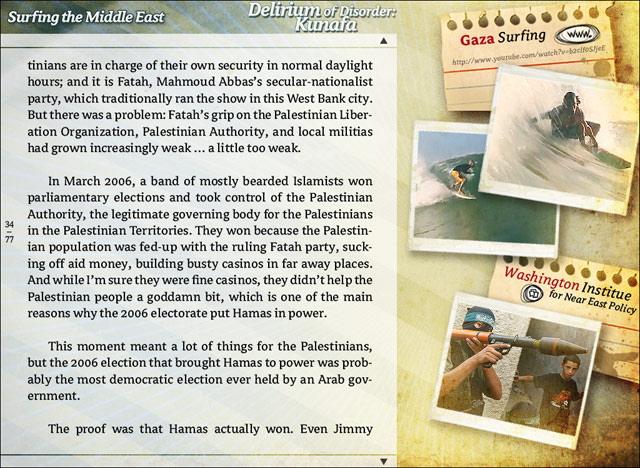
His utterance slowed the tempo of my weary heart. And I felt it. There was something more than surf that Lee just had to show me, and he had a damn good reason. I wasn’t used to surfing with the very real possibility that rockets could land upon the very soil I was standing on. They could hit anywhere; at any moment.
There is no rocket threat in Southern California and it would be ridiculous to even think of it. Lee had caught onto this. He sensed that I was only enjoying myself like a houndish surf-mutt and not tuned into the guarded Middle East manner that defines a Haifa surfer. That irked him. Not in any mean or malicious way, just enough to make him wheel his ride off the main road and give me a heart attack in showing me the knoll of the rocket.
Indeed … there is more to Israeli surfing than waves.
These Haifa surfers live under constant duress, a wrenched tightening of their gut that reminds them that this Eden of summer surfing is an illusion — there is no peace along the Eastern Mediterranean and it would have been a crime to allow a California surfer to see only the lucid waves and not the red paint that makes Haifa a target from random rocket fire.
Fifty miles north are an estimated 50,000 Hezbollah rockets in South Lebanon. They are pointed at every Israeli place I describe.
Surfing the Middle East iPad E-Book

photo by paul wellman
The only thing more amazing than Jesse Aizenstat’s journalistic surf trip around Israel and Lebanon is what he created when he got back to Santa Barbara. As one of the world’s first “enhanced media e-books,” Aizenstat’s Surfing the Middle East application for the Apple iPad is unlike anything you’ve ever seen, blending traditional text narrative with slickly cool graphics, photo galleries featuring extended captions, “build-out” sections on authors, regions, and even his dyslexia, videos of bad bombs and good times, PDF documents of military histories and past articles, maps focused on the region in question, and links to relevant Web sites. For $6 — a price that could drop if interest grows quickly — there’s not much more you could ask for in a multimedia format.
“Two thousand ten is the year that tablets went mainstream,” said Aizenstat. “Two thousand eleven is the year that punk kids like me from Santa Barbara can go mainstream,” all thanks to the creatively boundless digital platform now in everyone’s hands. “This has been the learning experience of my life,” he said of the project, which was just approved and released by Apple last week. And it’s only the first of a three-part series chronicling Aizenstat’s adventures, so tune in and get hooked on a ground-breaking narrative that just might change the future of publishing.
– Matt Kettmann
Search for Surfing the Middle East at the iPad App Store today. See surfingthemiddleeast.com for more info.



